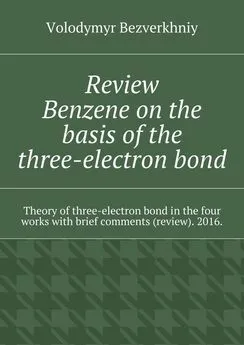Anatoly Kondratenko - Probabilistic Theory of Stock Exchanges
- Название:Probabilistic Theory of Stock Exchanges
- Автор:
- Жанр:
- Издательство:неизвестно
- Год:2022
- ISBN:нет данных
- Рейтинг:
- Избранное:Добавить в избранное
-
Отзывы:
-
Ваша оценка:
Anatoly Kondratenko - Probabilistic Theory of Stock Exchanges краткое содержание
Probabilistic Theory of Stock Exchanges - читать онлайн бесплатно ознакомительный отрывок
Интервал:
Закладка:
All market agents are identical, only their supply and demand are different. This axiom is the starting point in building up the theory. It says that in the context of studying the basic or determinant features of the behavior of market agents in the market and the market as a whole, especially in terms of the formation of market prices and trade volumes, all market agents have common or identical properties, depending mainly on the income and expenditure of agents, or, more precisely, on their S&D for the goods and services produced and traded in markets. In other words, all buyers with the same demand are identical, just as all sellers with the same supply are identical. It can also be said that such agents are indistinguishable from the point of view of influencing the outcome of market trading or exchange. This axiom is something similar to the principle of indistinguishability of particles in physics, but, naturally, it is not as strict as the principle of indistinguishability in physics. It is the S&D of agents that primarily determine their economic behavior in markets and, ultimately, the behavior of all markets; they are the only characteristics of agents and the main input data for calculation methods in probabilistic economics, i.e. the parameters that determine the studied economic system.
This axiom points to the possibility of constructing sufficiently generalized and accurate models of the agents’ behavior in the market and, consequently, of the market as a whole on the basis of agents’ supply and demand. It leads us to the right path for determining and defining general properties of the market agents’ behavior, which, in turn, enables us to identify general regularities in the course of market processes. This gives us a reliable basis for building theoretical economic models at a fairly high scientific level, using formal physical and mathematical methods. We are convinced that only these types of general market phenomena and processes fairly represent the main interest of any sufficiently accurate scientific investigation using the methods of theoretical and experimental economics. In other words, this axiom forces us to focus on building the economic theory as a sufficiently rigorous science, based on the study of the behavior of individual agents (see the principle of methodological individualism [Mises, 2005] in terms of their S&D, i.e., behavior determined by their individual demand or supply.
To avoid misunderstandings, let us make the following note. Of course, there are many aspects of the economic agents’ behavior in markets, which are determined by specific nuances and peculiarities in the behavior of particular people and communities in different situations and in different markets, and which often cannot be described in terms of supply and demand. These nuances and peculiarities of specific economic agents in particular markets are important, of course, when studying the process of making specific market decisions in particular situations of planning their market intentions and strategies [Schiller, 2000], for example, when choosing their quotations in course of trading at an exchange, but they are not the subject of probabilistic economics in this study. Moreover, for a probabilistic economics, it is all these nuances and features that determine the supply and demand for each agent at any given time, and these S&D are the inputs to the probabilistic economics. But, again, neither these nuances and peculiarities, nor concepts such as expected utility and risk [Wickens, 2012], are the basic concepts or the subject of research in probabilistic economics. The same is true for the nuances and peculiarities of exchange markets: in probabilistic theory, there is no need to describe and explicitly account for them, unlike in traditional theories like efficient market theory [Fama, 1970]. After all, it is not all these specific nuances and peculiarities of decision-making processes of market agents, and not the properties of specific markets like perfect competition, etc., but the specific actions of market agents and their determining role in the operation, development and evolution of markets, and the economy as a whole, that constitute the main subject of research and the main content of economic theory, in our opinion. As we argued above, it is, of course, important to understand what market agents think, and why they make these particular decisions, and not others, but, nevertheless, this is the subject of research in other more applied disciplines of economic science.
As we know, specific definitions of supply and demand as well as formulations of the S&D concept and methods of building S&D functions differ from each other in each economic theory, depending on its goals, objectives and possibilities. For example, the concept of supply and demand in mainstream neoclassical economics is based on the intentions or action plans of market agents. The intentions or plans of market agents are a trade secret, but it is completely impossible to build up a quantitative economic theory on the basis of the unobservable intentions or plans of real market agents. On the contrary, probabilistic economics is built on the basis of real actions of these agents in markets that can be observed and measured. More precisely, in a probabilistic economics, market S&D are derived or result from real agent S&D, i.e. from real agent market actions. In this fundamental point, by the way, probabilistic economics is close to the Austrian school of economics, especially in the interpretation of Ludwig von Mises [2005]. In other words, unlike, say, neoclassics, the probabilistic functions S&D are determined on the basis of the real actions of market agents in the market. And they are calculated with strict account of the following six principles of probabilistic economic theory.
Probabilistic economics is based on the most well-known concept of economic theory, namely the concept of S&D. In its most general form, this concept is formulated in probabilistic economics as follows: all the main things that happen in the market depend on some specific balance of supply and demand, determined on the basis of decisions made and openly presented in the form of market orders or market quotations to buy or sell a certain amount of an asset at a certain price. And only what is determined in the market by supply and demand, expressed in this form, is the subject of the study of probabilistic economics. In this sense it can also be called S&D economic theory, and the S&D principle itself is the main element of its basis.
This is generally the most important concept, or paradigm, in respect of the markets. Here it is: every market consists of market agents, buyers and sellers, interacting quite intensively, and prone not only to competition, but also to mutually beneficial social cooperation. There are no other market forces in markets, except the forces of market agents’ interaction. All market results are a consequence of the market agents’ actions, even if their actions were strongly influenced by other factors: the state, institutions, etc. Everything that happens in markets is done by interacting market agents and therefore only agent-based models (agent action-based models or below simply action-based models) can provide a reasonable and reliable quantitative basis for any modern economic theory. And the actions of market agents in the market are exactly the issuing of bids or quotations to buy or sell, which was discussed above.
Markets are never completely closed or free. All market agents are constantly influenced not only by other agents, but also by numerous external forces and factors. These external forces and factors, playing the role of boundary conditions, give economic systems harmony, integrity and stability. The most important of these are, of course, institutions of various kinds, such as the state, trade unions, laws, innovations, etc. Just as important might be such forces and factors of the external environment as other markets and economies, including foreign ones, as well as natural and man-made processes, etc. The influences exerted by each of these forces and factors on the structure of market prices and on market behavior can be comparable to the effect of the market agents’ interaction. Moreover, the actions of strong external institutional and environmental factors can significantly both stimulate and impede effective operation of internal market mechanisms and even partially suppress effective functioning of the market as a whole. Thus, the influence of institutional and environmental factors should be adequately taken into account in models together with interaction between market agents.
Modern markets are complex non-linear nonequilibrium dynamic systems, since all market agents are in constant interaction with each other and external forces, in other words, in constant motion in search of profitable connections to buy or sell goods and services. Buyers seek to buy as low as possible, and sellers want the highest possible price. Mathematically, we can describe this time-dependent dynamic and evolutionary market process as a movement in some formal economic space of market agents acting according to objective economic laws. Therefore, this movement has a somewhat deterministic character, and the market movement itself, or the evolution of the market system, in time can be approximated by equations of motion similar to the equations of motion in physics, such as the Lagrange equations in classical mechanics or Schrödinger equations in quantum mechanics.
In relatively free markets, buyers and sellers consciously and deliberately enter into trade deals with each other, because they enter into transactions only on mutually beneficial terms. It is not necessarily the case that they will seek to maximize their profits in every deal they make, since they understand that deals can only be mutually beneficial. But they try, usually, to increase their financial benefit by entering into as many of these mutually beneficial transactions as possible. Thus, it can be argued that the market as a whole seeks to maximize the trade volume, and moreover, to do it in monetary terms, as agents naturally seek, in the end, to increase their personal profits expressed in terms of money. This principle triggers the market process and the action of the laws of supply and demand. But the role of the state should also be taken into account, since it is present in the market as a full-fledged market agent and because, due to its enormous resources, it can, figuratively speaking, play not only the part of the first violin, but also the role of the conductor in this orchestra. Consequently, market dynamics can be approximated by applying the trade volume maximization principle to the market as a whole. Due to the fact that at present we do not have a developed mathematical body to use the more general principle of least action and the corresponding Lagrange equations of motion, the trade volume maximization still remains the only tool in this theory that helps to evaluate at least short-term trends in market dynamics.
Uncertainty and probability always accompany human action in the markets, therefore without taking them into account it is impossible to operate successfully for a sufficiently long period of time. This is caused by the very nature of human reasoning and the fundamental human inability to accurately predict the future state of markets. Moreover, according to the institutional and environmental principle, markets are constantly under the influence of various institutions and environmental factors. For these reasons, all market agent decisions and actions, and hence all market processes and phenomena, are essentially probabilistic, so they can only be adequately described by applying probabilistic mathematical methods and models. On the same grounds, demand and supply functions should also be described in terms of probability distributions.
Читать дальшеИнтервал:
Закладка:










